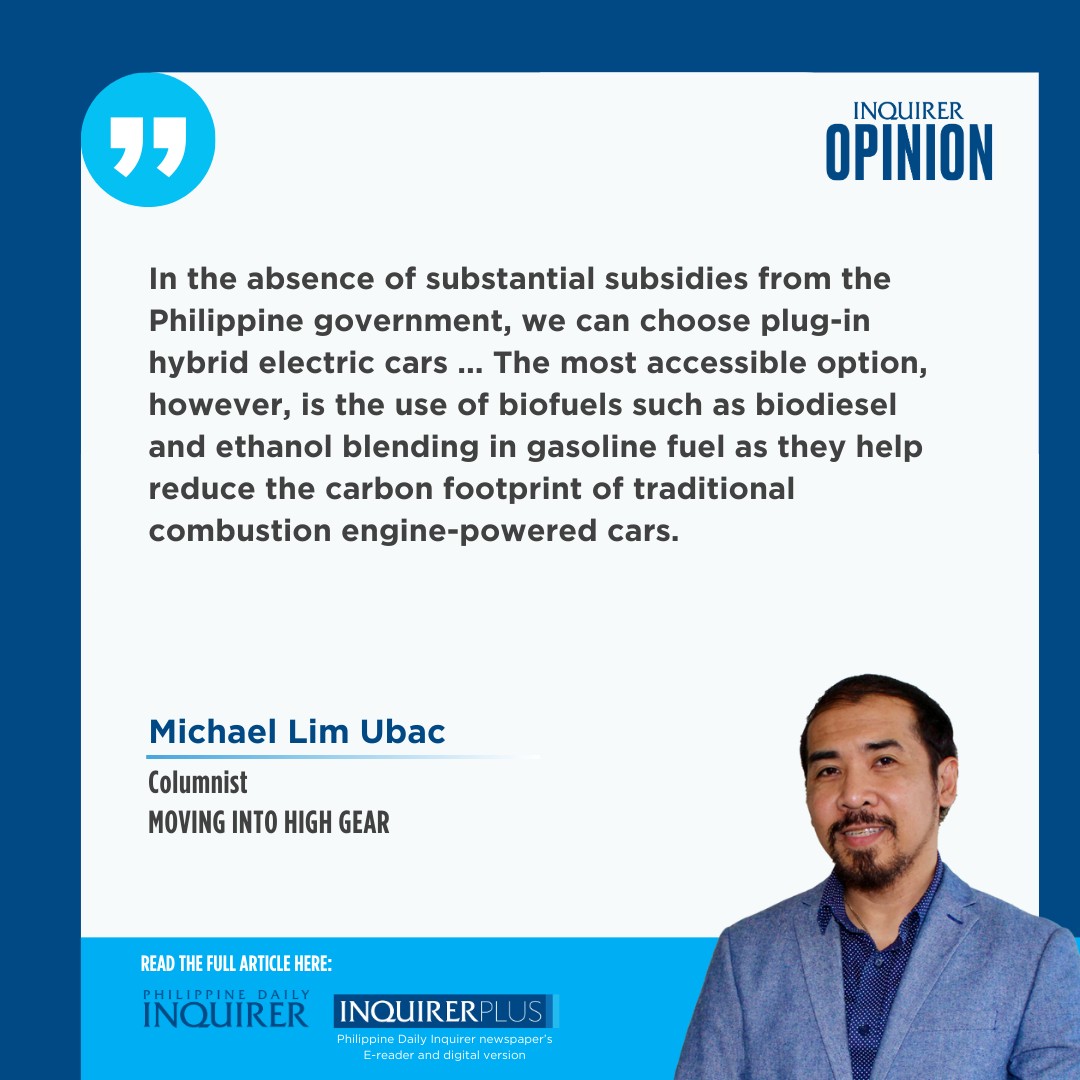Higher biodiesel blend: Countdown begins
It’s less than a month before the implementation of the Department of Energy’s (DOE) order for a 3-percent coco methyl ester (CME) blend in all diesel fuel sold nationwide. The directive is part of a larger effort to increase the biofuels blend, which not only contributes to cleaner air, but also results in lower fuel prices at the pump.
The DOE Circular No. 2024-05-0014 issued in May requires all downstream oil industry participants to implement a 3-percent CME blend starting Oct. 1, 2024, and gradually increasing the percentage to 4 percent in 2025, and 5 percent in 2026. I wrote about this welcome news earlier in a column titled, “Cleaner air, cooler planet with biofuels” (5/30/24). You can access the column here.
Let us consider the benefits of using biodiesel. First, when blended with diesel, CME, a fatty acid ester produced from coconut oil, turns into coco-biodiesel. By reducing levels of particulates, carbon monoxide, and hydrocarbons in diesel-powered vehicles, biodiesel contributes to combating climate change and environmental pollution. The mandated blend of 3 percent is lower than the biodiesel blend being sold in the United States, Germany, and some European countries, as diesel in these areas is being blended with ester at a percentage of 5 to 20 percent. This comparison is based on a study by the Philippine Coconut Authority (PCA) and the Department of Agriculture (DA). (You can access the study here: https://tinyurl.com/jnsav7t3).
Substituting diesel with CME. In 1995, the PCA studied the process of transesterification, which converts fats into biodiesel. When diesel-powered transport vehicles were fed with 100 percent CME, findings showed that it would be “technically viable to substitute petroleum diesel with CME, but not economically viable due to the high cost of CNO (coconut oil).” However, the passage of Republic Act No. 8749, or the Philippine Clean Air Act in 1999, provided an impetus to develop CME as a diesel fuel additive to help the transport sector comply with the smoke emission standards set by the law.
The Biodiesel Development Project, which took off in May 2001, demonstrated that with a 1-percent CME blend, a 50-percent reduction in smoke emissions could be achieved without engine modifications. A separate study by professors at the Technological University of the Philippines and Japan’s Nihon University on the engine performance and emission of a single-cylinder four-stroke diesel engine further proved the viability of CME as a diesel additive for low-sulfur diesel. An average reduction of 20 percent in NOx (nitrogen oxides) and even better, a 70-percent reduction in particulate matter, was recorded. A higher CME blend of 5 percent also results in a 10-percent increase in mileage, corresponding to an estimated net savings of P4.17 per liter of diesel, according to the DOE.
Electric cars. Of course, the greener option is to switch to electric vehicles (EVs), which have lower emissions and produce fewer heat-trapping greenhouse gases. In the United States, EVs are suddenly becoming more affordable to potential buyers. “More efficient manufacturing, falling battery costs, and intense competition are lowering sticker prices for battery-powered models to within striking distance of gasoline cars,” The New York Times (NYT) reported on June 3.
The $7,500 federal tax credits, in addition to other state incentives, are an additional incentive for buying new electric cars, even though they are still more expensive than gasoline car models, the NYT added. In the absence of substantial subsidies from the Philippine government, we can choose plug-in hybrid electric cars that utilize batteries to power their electric motors, while using fuel such as gasoline to power their internal combustion engines. The most accessible option, however, is the use of biofuels such as biodiesel and ethanol blending in gasoline fuel as they help reduce the carbon footprint of traditional combustion engine-powered cars.
Carbon neutrality. The Biofuels Act of 2006 mandates that all liquid fuels for motors and engines sold in the country be blended with biofuels, which are alternative fuel sources made from biomass. When burned, they produce fewer emissions of particulate matter, sulfur dioxide, and other toxic air pollutants such as those emitted by fossil fuels (oil, coal, and natural gas). The use of biofuels is a step in the right direction toward the gradual decarbonization of our transportation sector. The goal of achieving “net zero emissions” by 2050 is still a long way off because it would require a lifestyle change from all of us. To limit global warming, net zero (or carbon neutrality) requires that all emissions of heat-trapping greenhouse gases be counterbalanced by the reduction of fossil fuel use in equal amounts.
To make this a reality, both government and private sectors should pursue massive investments in “zero-carbon” renewable sources, including wind, solar, biomass, hydropower, and geothermal.
—————-
For comments: mubac@inquirer.com.ph

















